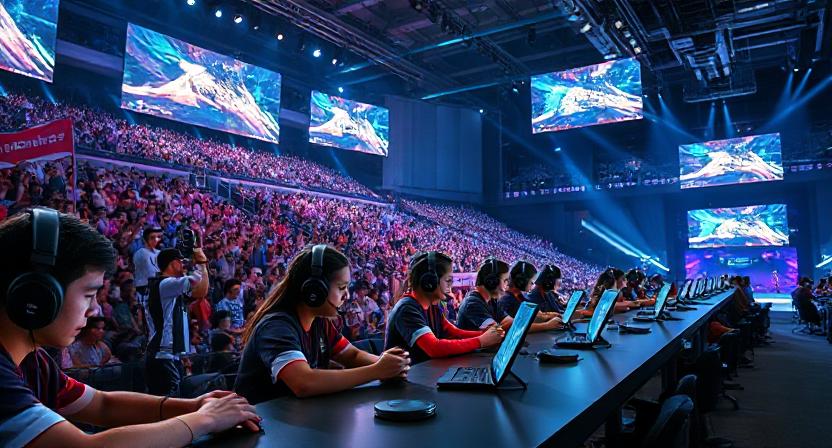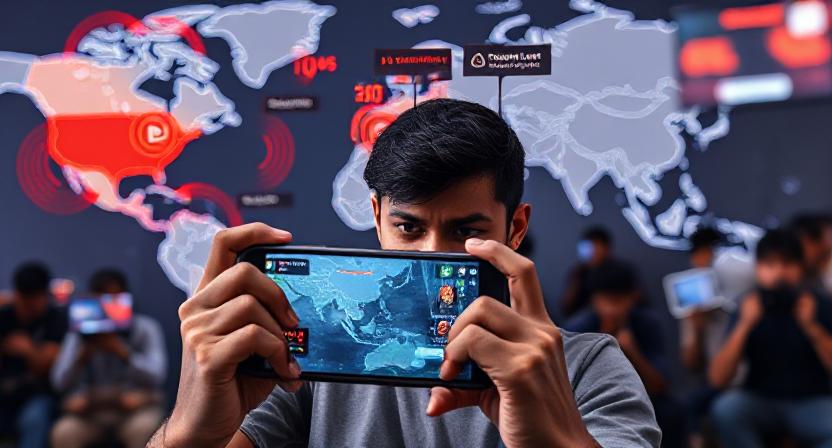Mobile Growth Predicted 2025 Players On The Go

The Rise of Mobile Esports & What It Means for League of Legends and Valorant Teams Competitive gaming is undergoing a seismic shift. Mobile esports...
⏱️ Estimated reading time: 6 min
Latest News
The Rise of Mobile Esports & What It Means for League of Legends and Valorant Teams
Competitive gaming is undergoing a seismic shift. Mobile esports once considered a secondary niche are now redefining the industry. Fueled by booming smartphone adoption competitive mobile titles and global tournaments mobile esports are reshaping the playing field. But how does this trend impact traditional PC‑first franchises like League of Legends LoL and Valorant and the teams built around them?
Market Explosion
In 2024 the global mobile esports market reached approximately USD 655 million and is projected to soar to around USD 8.6 billion by 2034 a compound annual growth rate CAGR of 29.4%. North America alone earned nearly USD 199 million in 2024 and is expected to exceed USD 2.1 billion by 2034 Market.us.
Widening Audience and Accessibility
With over 3 billion mobile gamers worldwide mobile esports democratizes competition no gaming PC required. This accessibility has opened esports to new demographics especially in emerging markets where mobile is the dominant platform.
Viewership & Tournament Reach
Events like the Mobile Legends Bang Bang M5 Championship have surpassed 5 million concurrent viewers setting new esports viewership records . PUBG Mobile and CoD Mobile tournaments regularly feature million-dollar prize pools and global broadcasts .
Sponsorships, Cross‐Platform, and Streaming
Major sponsors brand partnerships and cross‐platform tournaments have elevated mobile esports. Developers now push cross‑device play that bridges mobile PC and console players further expanding audience reach and creating hybrid competitive structures.
Fan Shifts & Viewership Comparison
Although League of Legends and Valorant remain leading PC esports, attention is being pulled toward mobile formats and regional variants like Wild Rift. Reddit community discussions note that LoL Worlds 2024 had an average of 1.46 million viewers beating the Valorant Champions 2024 peak of 1.41 million despite Valorant’s heightened hype .
Mobile Versions & Publisher Strategy
Riot Games is preparing mobile versions of its PC titles LoL: Wild Rift is already a mobile esport with its own competitive scene and Valorant Mobile is expected soon. Chinese orgs have already started recruiting mobile Valorant players even before full release a clear sign of how seriously teams are treating the mobile frontier.
Why Established Teams Are Paying Attention
Teams like LOUD RRQ and Team Falcons are investing heavily in mobile rosters across titles like Free Fire and Mobile Legends alongside LoL and Valorant divisions . This diversification hedges risk while opening new revenue streams as mobile viewership continues to climb.
Financial Reality & Regional Revenue
While global esports viewership has grown estimated 318 million esports enthusiasts by 2025 many PC-driven teams face financial pressure. Organizations like 100 Thieves TSM and FaZe have cut back or restructured due to high costs and flat revenue trends . Meanwhile mobile esports offers sponsorships in‑game IAP monetization and broad regional appeal especially across Asia and Latin America.
Emerging Regional Powerhouses
Mobile leagues are flourishing in Asia. The Mobile Legends Professional League MPL in Southeast Asia and now Brazil became the first esports league to exceed 1 billion hours watched by October 2024 surpassing even LoL Worlds in viewer engagement. Brands and audiences in these regions are aligning more with mobile than traditional PC titles.
Team Dynamics & Strategic Shifts
Top-tier organizations are embedding mobile divisions. In Indonesia RRQ fields top contenders in Mobile Legends Free Fire, PUBG Mobile alongside Valorant and LoL . Brazil’s LOUD similarly competes across Free Fire Valorant LoL and Brawl Stars . These moves signal that major brands want exposure across platforms to capture diverse audiences.
Cross‑Platform Synergy & Branding
Cross‑platform tournaments allowing mobile and PC players in shared events are heightening interest in unified leagues. Roster overlap offers branding consistency a fan of a team’s mobile Valorant squad might tune in to their LoL matches reinforcing loyalty and sponsorship value.
Talent & Development Pipeline
Mobile esports also becomes a talent entry point. Players from underserved regions can go pro via mobile before transitioning to PC titles or remain focused on mobile. Teams investing in mobile scouting widen their talent pool and future-proof competitiveness.
Challenges & Opportunities
Despite growth mobile esports monetization remains complex. In-app purchases and ads dominate but converting casual mobile gamers into loyal viewers or paying fans is still difficult for smaller titles . Also mobile titles face saturation players and viewers have many game options.

Infrastructure Limitations
Unfortunately regions with low network quality still face significant latency issues in competitive mobile gaming.
For example in parts of Africa and South Asia players often experience high ping and unreliable connectivity which degrade both participation and viewer experience.
Specifically sources report 168 ms average latency between London and Johannesbur and even higher in other countries well above the acceptable threshold for fast-paced gameplay.
Consequently competitive play remains impractical in affected regions unless local game servers improve or infrastructure dramatically advances.
Publisher Control & Ecosystem Uncertainty
Publishers maintain tight control. Riot Tencent and Moonton dictate league rules slot access and monetization. Teams and pro players often lack leverage echoing challenges in traditional PC esports .
Valorant Mobile in China
Tencent-driven Valorant Mobile testing in China already includes org recruitment pipelines. Local franchises are preparing rosters even before official launch a level of investment that shows long-term confidence in the mobile sub‑ecosystem .
League of Legends Mobile (Wild Rift)
While Wild Rift esports is not new it continues to expand globally with professional leagues running alongside LoL. Organizations are sharing resources across PC and mobile teams to capture both markets simultaneously.
Continued Growth of Mobile Esports
Analysts project CAGR 29% for mobile esports through 2034 and market size growing from USD 655 million in 2024 to over USD 8 billion by 2034 driven by demographics sponsorships and mobile infrastructure investment.
Convergence of Team Identity
Future teams may not be defined by platform. Hybrid rosters competing in both mobile and PC versions of popular titles will become standard. Branding and revenue generation will hinge on multi‑platform dominance.
New Format Tournaments
Cross-platform tournaments and third-party league opportunities like Esports World Cup participation will play a bigger role. Riot is exploring expanded third-party and interregional competition structures which may feature mobile‑PC crossover events.
Conclusion: Mobile Esports Is Too Big to Ignore
Redpoint Secures $650M for Early-Stage FundMobile esports has transformed from a casual sideline to a global powerhouse. Its accessibility global reach and massive viewership are reshaping the esports hierarchy. Traditional franchises like League of Legends and Valorant face both challenge and opportunity traditional rosters must adapt and brands must diversify.
As mobile titles continue to attract fans, sponsors and tournament infrastructure the most successful esports organizations will be those that embrace hybrid strategy. Supporting mobile divisions scouting regional talent and preparing for multi-platform tournaments will be key to staying competitive in this new era.For teams and fans alike the future of esports is mobile-first and LoL and Valorant teams that recognize and act on this will lead the next generation of professional gaming.Would you like sections formatted as infographics HTML/Markdown or to dive into specific teams like DRX T1 or LOUD in more detail?
Related Posts

Kiki Startup Fined $152K for NYC Rental Violations
Subletting Startup Kiki Faces Consequences in NYC Auckland-founded Kiki Club, a peer-to-peer subletting startup, launched...
November 30, 2025

Function Health: $298M Funding for AI Health Insights
Revolutionizing Healthcare with AI: Function Health’s $298M Series B The healthcare industry is experiencing a...
November 24, 2025

Kaaj Secures $3.8M to Automate Credit Risk with AI
Kaaj Raises $3.8M Seed to Revolutionize Credit Risk Automation After a decade immersed in credit...
November 19, 2025











Leave a Reply